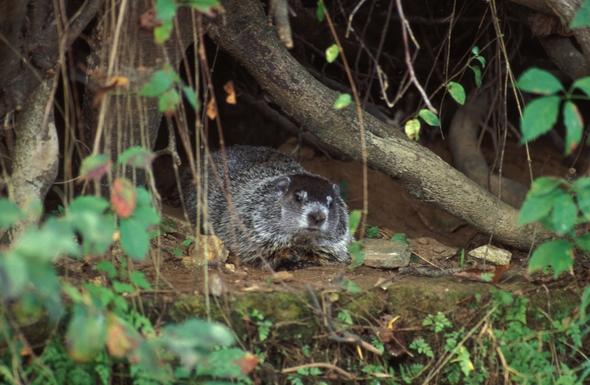
Xplor reconnects kids to nature and helps them find adventure in their own backyard. Free to residents of Missouri.


































Stay in Touch with MDC news, newsletters, events, and manage your subscription

Xplor reconnects kids to nature and helps them find adventure in their own backyard. Free to residents of Missouri.

A monthly publication about conservation in Missouri. Started in 1938, the printed magazine is free to residents of Missouri.


CAPE GIRARDEAU, Mo. – As a cold front settles into the area, wildlife across Missouri are denning up, or beginning to hibernate, to avoid the cold. Winter is a challenge for wildlife and many species have various methods of surviving the cold. Bruce Henry, MDC natural history biologist, says not all wildlife hibernates and there are several ways people can help winter wildlife.
“Though bears are widely thought of as hibernators, technically, they aren’t,” Henry said, adding that a bear’s sleep is not as deep as a true hibernator like a groundhog.
Henry said bears fatten themselves before winter and their heart rate drops as they sleep, but their body temperature doesn’t go down much. This is probably because black bear females are usually pregnant when they sleep, and the babies growing inside them need warmth. Bears can even nurse in their winter dens.
Frogs, snakes and turtles don’t hibernate, but they go into what’s called torpor, or a dormant state, that closely resembles death. Green frogs spend winter in the mud at the bottom of ponds and box turtles bury themselves in soft ground. Snakes find shelter in a den or crevice and may spend the winter in a tangle of other snakes–sometimes not all the same species.
Chipmunks, skunks, raccoons and opossums don’t hibernate, but they stay under cover and nap during the coldest parts of winter. Their naps might last weeks, but when the weather turns balmy, they venture outdoors. Watch for tracks, scat and chew marks as sign of their winter activity, Henry said.
Some animals leave the state and don’t come back until spring, according to Henry. Others find sheltered dens and sleep until spring. Some remain in Missouri and stay active through the winter, but they still have special ways of handling the cold weather. Insects, such as spiders, bees, wasps, moths and butterflies adapt to winter weather as well.
“Some insects refine sugars in their body into a form of antifreeze that helps them survive the extreme cold,” Henry said.
True hibernators in Missouri include groundhogs, Franklin’s ground squirrels, meadow jumping mice and some bat species.
“In late summer, groundhogs will fatten up to prepare for a deep sleep that usually lasts until winter is over,” he said. “They conserve energy reserves while sleeping by lowering their body temperature by about half and their heartbeat down to about four beats per minute from the normal 160 beats per minute.”
For wildlife that don’t hibernate, Henry said people can recycle live Christmas trees by removing all decorations and placing the tree on its side in a backyard or in the woods where it could be used as shelter for rabbits, squirrels and birds. He also said bird baths and feeders can be a great help to winter birds during periods of freezing temperatures, ice and snow.
Henry said keeping dormant plants on your property through the winter, as well as some leaf litter, will provide overwintering habitat for many species of insects and small wildlife. Skipping the last opportunity to mow the lawn can even make a difference by providing a little bit of needed habitat.
For information on watching and helping wildlife through the winter season, go online to mdc.mo.gov.